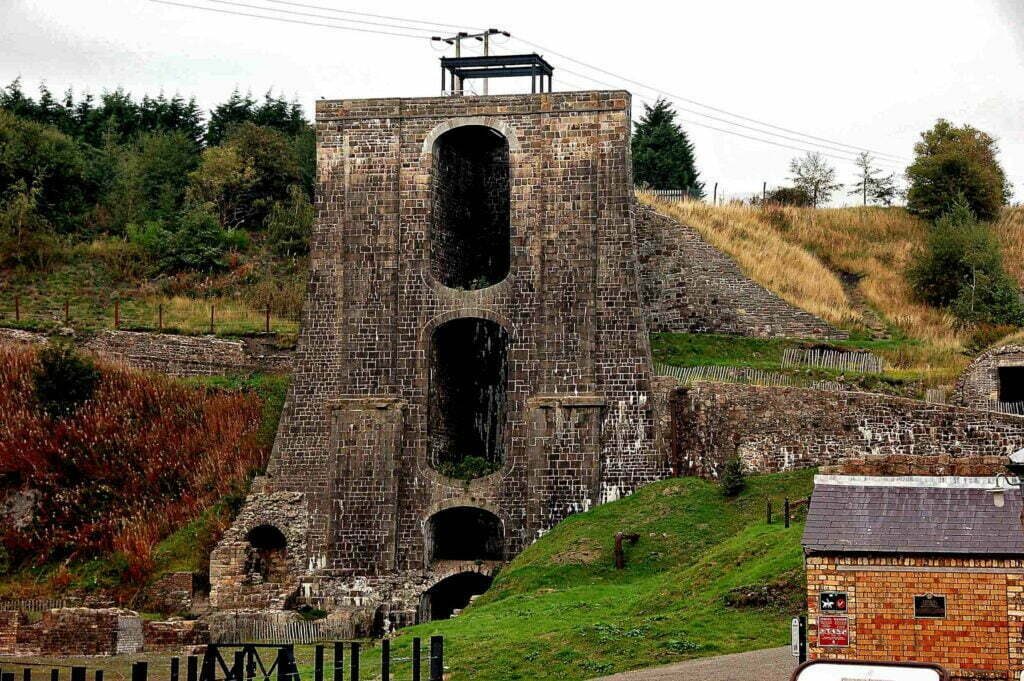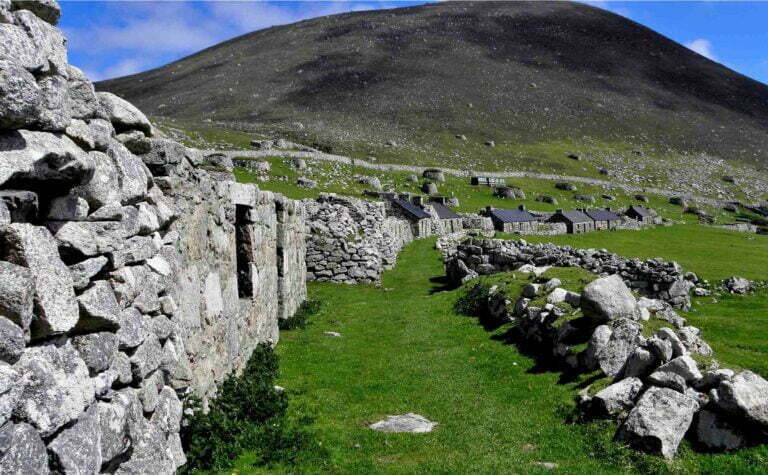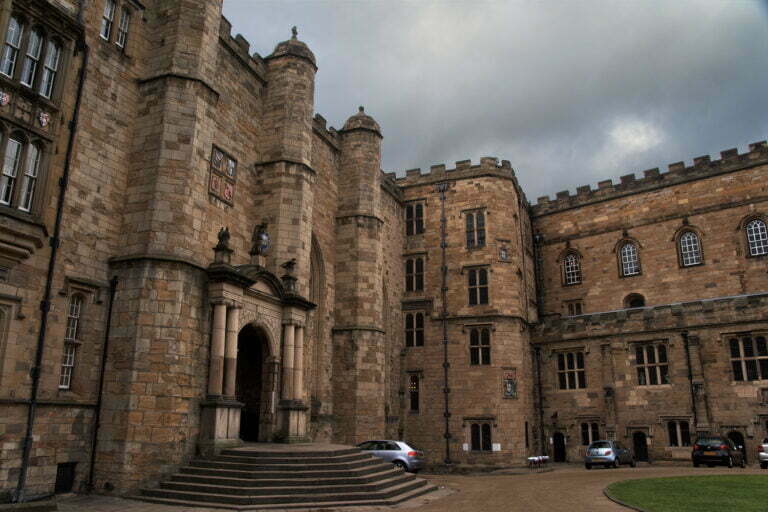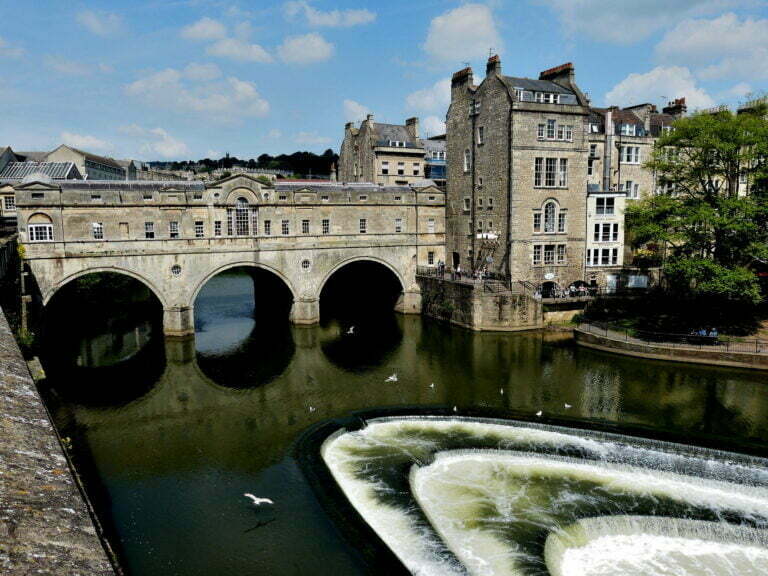Blaenavon Iron Works, or Blaenavon Industrial Landscape, located at the upper end of the Avon Llwyd valley in South Wales, United Kingdom, was a UNESCO World Heritage Site from 2000 onwards.
Blaenavon Iron Works
Blaenavon Iron Works is a unique material representation of the social and economic framework of nineteenth-century industry. The region surrounding the Blaenavon Ironworks gives an extremely detailed picture of the coal and iron industries in South Wales. When it was one of the world’s major iron and steel manufacturers in the 19th and early 20th centuries.
Coal and ore mines, quarries, a crude railway system, furnaces, the workers’ residences, and their community’s social infrastructure are all visible in existence. Iron ore has been mined in the Blaenavon mountains since at least 1675. The area was, however, largely undeveloped, with small-scale iron mining and grazing being the only activities.
Blaenavon Industrial Landscape
Thomas Hill, Thomas Hopkins, and Benjamin Pratt constructed a large new ironworks in Blaenavon in 1788. Putting the newest industrial revolution technology and organization into operation in a fresh and resource-rich area. By 1789, the ironworks had three steam-powered blast furnaces, making it one of the biggest in the world.
Adit mining for iron ore and coal became more widespread in 1817. Shaft mines were established to replace surface scouring, with complex drainage, haulage, and ventilation facilities. Workers migrated from rural Wales, the industrial Midlands, Ireland, Scotland, and rural England, and the population increased quickly. Blaenavon parish had expanded from a small population when the ironworks were established to 11,452 in 1891.
The area’s social growth resulted in a rich urban culture. Iron ore patches, coal mines, limestone quarries, iron forges, brickworks, tramways, watercourses, and workers’ homes evolved quickly into an industrial environment. The Blaenavon Corporation, which was restructured as a joint stock company in 1836, was in charge of them all.
Blaenavon wales
The workers’ scattered housing and the works’ school, church, and chapels were complemented by their evolution during the 1840s and 1850s. A community having a range of urban functions that are not owned by the enterprise. In the region, there were three main clusters of buildings: one around the Iron Works, one along the east-west axis, now King Street, and one around St Peter’s Church.
Steel manufacturing began to drop at the turn of the century, allowing coal production to expand for export. Steel production ended in 1938, and the last significant functioning colliery, Big Pit, closed in 1980.
The Big Pit is now a world-renowned coal mining museum and one of only two mining museums in the United Kingdom where visitors may go underground. The preservation of Blaenavon Iron Works has aided in the economic recovery of the area. The town and its surroundings have endured, with only minor changes to reflect its history.
Blaenavon world heritage site
Southern Wales was at the heart of the Industrial Revolution in the nineteenth century. Coal and iron were the two building stones of early manufacturing. The Blaenavon Ironworks and the Big Pit National Coal Museum are both conserved structures in Blaenavon.
The Blaenavon Iron Works, founded in 1789, is the best-preserved 18th-century ironworks in the world. The Blaenavon World Heritage Site is also known for being the first place where Bessemer steelmaking technology was implemented. Sidney Gilchrist Thomas discovered it in Blaenavon, and it served as the cornerstone for worldwide steel manufacturing until the 1960s.
Blaenavon tour
Only a short distance from the ironworks lies the Big Pit National Coal Museum. It was an operating coal mine until the 1980s, and it is now one of the UK’s most visited museums. You may take a trip below in addition to the surface structures, and it is one of the few destinations in the UK that offers subterranean excursions.
The world heritage site’s scope, however, extends beyond the industrial structures in Blaenavon. It also encompasses a large area of adjacent land that has been shaped by industrial expansion. This covers anything from iron and coal mines to hundreds of years of medieval ore diggings and Roman ponds.
This may be the only world historic site that protects a large area of land solely because of human impact. Blaenavon is easily accessible by train from any major British city. It is now the UK’s sole world heritage site with its own visitor center. It is also close to the Brecon Beacons National Park, which should be visited as part of any visit to the area.
Blaenavon Industrial Landscape
The Blaenavon Industrial Landscape is made up of a number of monuments and historical structures that played an important role in the development of industry in this region of Wales. It is significant because it represents a microcosm of the British Industrial Revolution.
Coal and iron were two of the most important items produced in the period, and the majority of them came from South Wales. From the late 18th century until the mid-19th century, iron production increased dramatically. The iron was utilized to build a variety of structures, including factories, engines, and railroads.
The total land area of the property is 3,290 hectares. Mines, quarries, canals, and manufacturing units, as well as transportation and social infrastructure, are all frequent aspects of this industrial environment. From 1789 to 1902, the Blaenavon Ironworks were in operation.
The remnants of this historic industrial firm have stayed intact and in outstanding condition to this day. The Big Pit, a deep coal mine, was one of the last of the industrial landscape’s components to come online. The Big Pit Colliery has been reopened as a museum, along with portions of the surrounding industrial environment.
In reality, tourists are allowed to attend the subterranean tour to learn about how miners and ironworkers worked during the 18th century, when the mine was still open for business. UNESCO has designated only 33 square kilometers of the Blaenavon Ironworks activity, despite the fact that it covers more than 3,000 hectares.
The Blaenavon Industrial Landscape was the United Kingdom’s first cultural landscape. There are 24 monuments and 82 structures that are part of the official landscape. Many of these structures were fragile before they were designated as a World Heritage Site because they had little to no conservation work done on them.
However, since it was designated by UNESCO, substantial work has been done to protect the site. In 2008, a World Heritage Center was established on the site as part of this development.
Share to stand out from the crowd with this Blog.








